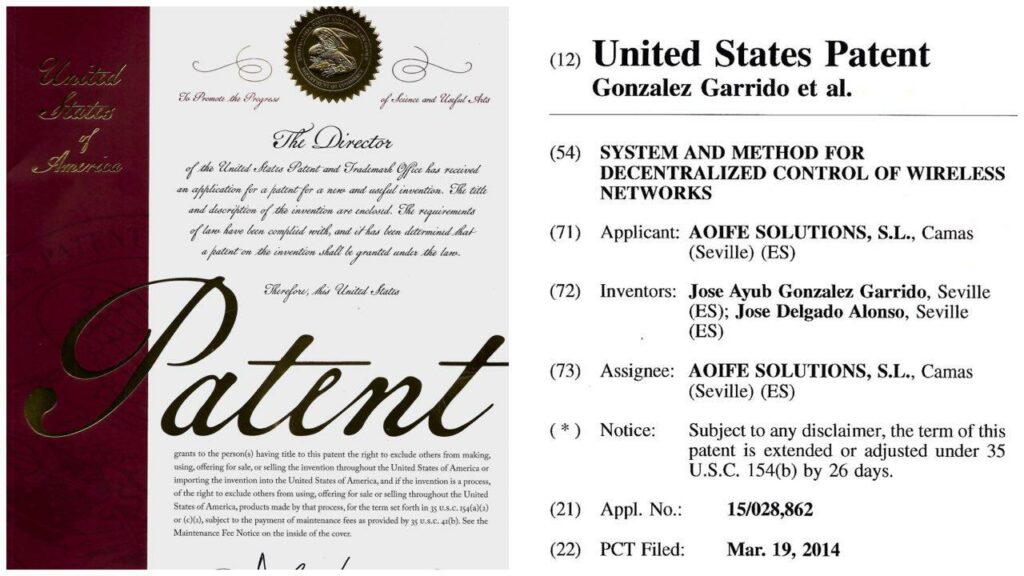On August 27, 2019, a patent (US 10,397,932 B2) was granted to Galgus by the United States Patent and Trademark Office (USPTO) of the United States Department of Commerce for the “System and Method for Decentralized Control of Wireless Networks”.
The invention patented relates to a decentralized control technology for wireless network installation, which distributes the control logic between all of the access points that make up the network, eliminating the centralized controller from the network architecture by means of communication between the access points themselves, thus substantially improving the efficiency of the management of the wireless network itself.
The advantages that this architecture provides are the following:
- Because it is decentralized, it is not dependent on any particular element, as all of the access points behave like small controllers that are able to interoperate with each other.
- Each node behaves like a controller and provides support to the adjacent nodes.
- The network tasks are thus distributed, without overloading any one element, thus preventing bottlenecks.
- It reduces the high hardware costs of the centralized controller.
- It is 100% scalable, making it possible to add more access points without having to increase the capabilities of the centralized controller.
- It enables management from any point with network access.
- Redundancy to failures, as the logic of the controller and, as such, the operations of the network is not compromised by the failure of any one access point.
- Automatic configuration of the transmit power of the access points belonging to the network in order to reduce unnecessary interference.
- Automatic configuration of the channel used by each access point belonging to the network in order to reduce interference between access points and increase the number of simultaneous transmissions in a limited physical environment.
- Automatic selection of the access point that provides service to a new station or user (STA, “Station”), in order to reduce interference between access points and stations operating on the same channel or on different channels.
- Balance the network load with the aim of reducing interference within the network and the number of hidden nodes, as well as taking advantage of the total transmission capacity of the network to prevent bottlenecks from arising in some access points while others remain idle.
- Exclusion of users based on location, denying service to users who are located outside the range of operation of the network when these users receive the signal of the network.
“Its been a long way to achieve this. It was back in October 2013 when we applied for this!, more than five years to, finally, succeed!” said Galgus’ CEO, Jose Gonzalez, who added “Undoubtedly, it’s not just important because it can help us to safeguard our software, the good thing is that it’s a proof of Galgus’ technological innovation capability in the wireless field”.
Galgus takes it a step further!








